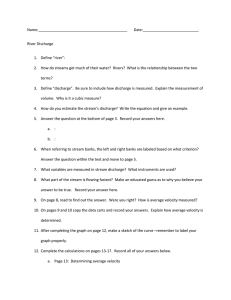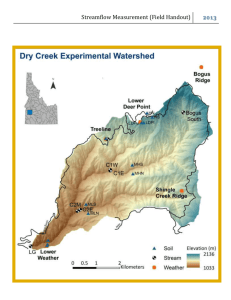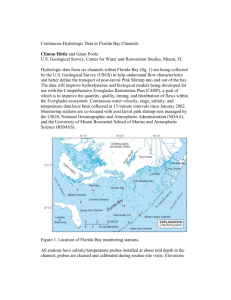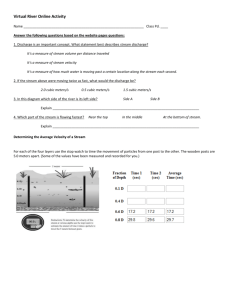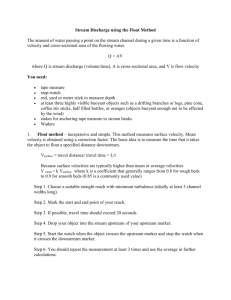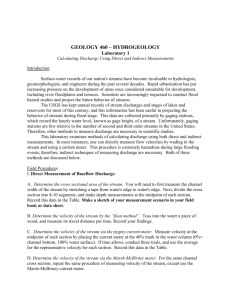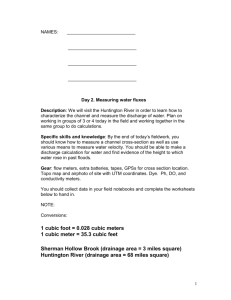C.N. 1/29/13
advertisement
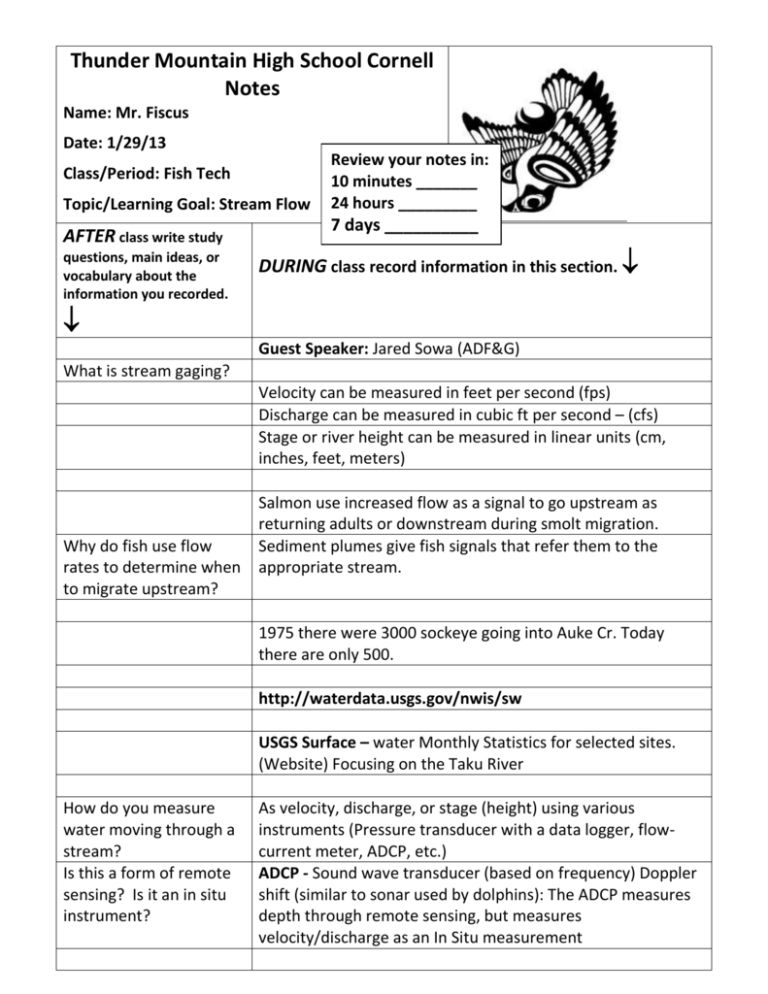
Thunder Mountain High School Cornell
Notes
Name: Mr. Fiscus
Date: 1/29/13
Class/Period: Fish Tech
Topic/Learning Goal: Stream Flow
AFTER class write study
questions, main ideas, or
vocabulary about the
information you recorded.
Review your notes in:
10 minutes _______
24 hours _________
7 days __________
DURING class record information in this section.
Guest Speaker: Jared Sowa (ADF&G)
What is stream gaging?
Velocity can be measured in feet per second (fps)
Discharge can be measured in cubic ft per second – (cfs)
Stage or river height can be measured in linear units (cm,
inches, feet, meters)
Why do fish use flow
rates to determine when
to migrate upstream?
Salmon use increased flow as a signal to go upstream as
returning adults or downstream during smolt migration.
Sediment plumes give fish signals that refer them to the
appropriate stream.
1975 there were 3000 sockeye going into Auke Cr. Today
there are only 500.
http://waterdata.usgs.gov/nwis/sw
USGS Surface – water Monthly Statistics for selected sites.
(Website) Focusing on the Taku River
How do you measure
water moving through a
stream?
Is this a form of remote
sensing? Is it an in situ
instrument?
As velocity, discharge, or stage (height) using various
instruments (Pressure transducer with a data logger, flowcurrent meter, ADCP, etc.)
ADCP - Sound wave transducer (based on frequency) Doppler
shift (similar to sonar used by dolphins): The ADCP measures
depth through remote sensing, but measures
velocity/discharge as an In Situ measurement
1 pt
1 pt
1 pt
2 pts
3 pts
1 pt
1 pt
Extra Credit (??)
Homework assignment due – Taku River flow data
spreadsheet w/ graph
1) Go to USGS website:
http://waterdata.usgs.gov/ak/nwis/current/?type=flow
and then scroll down to ‘Southeast’ (Alaska) and click on the
Taku River. From the “Available data for this site” choose
Time Series: Annual Statistics
2) Select Discharge. Scroll down and enter 1987 in the ‘From’
box and 2012 in the ‘To’ box to identify the time range of data
you will work with. Then select ‘Tab-separated data’ and hit
the submit button. Save the downloaded file to your
computer.
3) Copy data to spreadsheet
4) Create title, align data and names in two columns
5) Create bar graph of data –{(MS Excel) – Insert menu – Chart
– select Column or Line graph}
6) Label x and y axis
7) Take screen shot of data and graph to paste into electronic
notebook.
Produce a similar graph for Taku River using Monthly Statistics
and displaying any 2 years of monthly data side by side in the
same graph
THE FIRST CHANCE YOU GET: First, summarize what the information was about today. Second,
answer these two questions: What did I learn in this class today? What do I need to know more about?
Jarrod Sowa of ADF&G, SARCU (Statewide Aquatic Resources Coordination Unit) talked about things
related to stream flow or flow regime, including identifying the key parameters (flow, discharge,
velocity, stage height), the units of measure associated with the parameters (velocity=linear
length/time; discharge=linear length-volume/time; stage height=vertical height) and the instruments
used to acquire this data, including pressure transducers (measures stage height), current (flow) meters
(measures velocity), and Acoustic Doppler Current Profiler (ADCP), which measures both water depths
and velocity and discharge.
The hydrograph was introduced which depicts a river’s velocity, discharge, or stage height over time.
Hydrologic parameters that can be evaluated and identified in a hydrograph include magnitude (highest
values), frequency (how often do events such as highest or lowest flows occur in a time period?),
duration (how often do they occur?), timing (when do they occur?), and rates of change (expressed as
unit of measure over time).
A percent exceedance parameter and table were discussed which allows evaluation of the % of days
occurring in a time period (day, month, year, 10 years, etc) that exceed a particular discharge
measurement. This provides a quick way to see where a flow measurement stacks up compared to
other times of the year.
We saw pictures and data for stream flow measures over different times of the year, due to rain/snow
events and how these are affected by upstream lakes or glaciers and snow pack and weather/climate.
We discussed and looked at pictures of sediment flumes, caused by the transport and mobilization of
sediments down a stream and this relationship to flood events.
We discussed salmon movement patterns with respect to varying flow events across a year.
Extra Credit:

